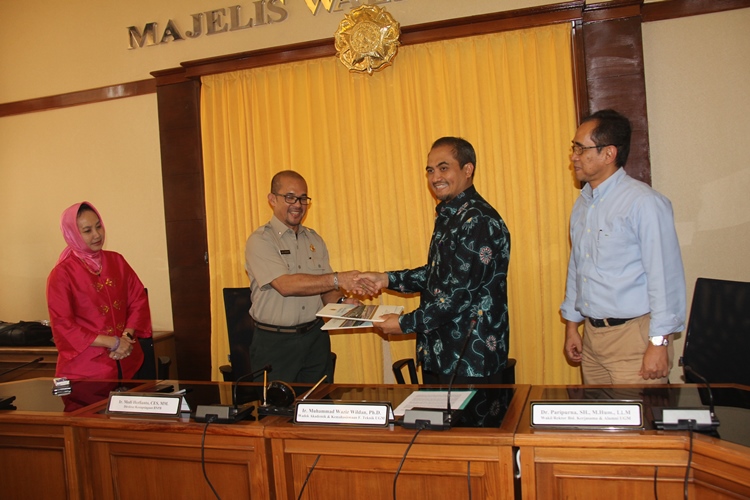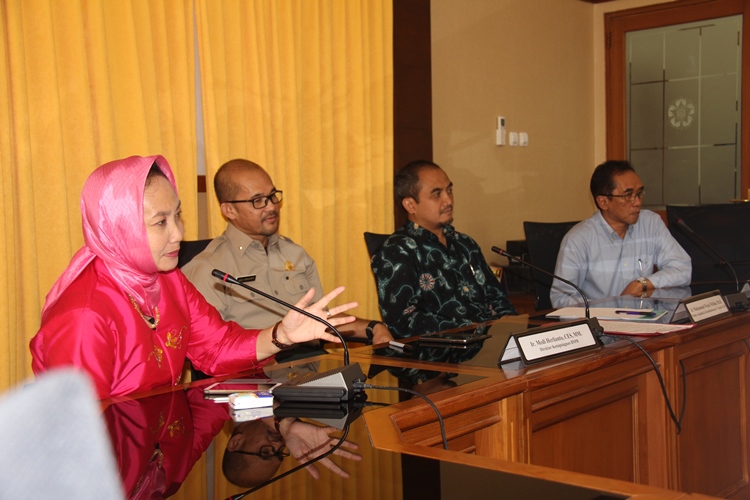Landslides and floods are disasters that often strike Indonesia, the figure reaching as high as 80%. This was said by an alert director at the National Disaster Mitigation Agency (BNPB), Ir. Medi Herlianto, CES., M.M, after signing a memorandum of cooperation with Faculty of Engineering UGM, Monday (27/7) at UGM Main Office.
This condition urges the Agency to focus on landslide disaster risk reductions which, among others, installing early warning system (EWS) in locations prone to land movement. This year the BNPB and UGM will install EWS’ in six locations. Medi said the areas prone to land movement include West Java, Central Java, East Java, East Nusa Tenggara, Papua, and Bali.
“The number of population exposed to landslides reaches as high as 40.9 millions. This year we would install the EWS tools in six areas in Central Java and Bali,” he said.
Rector of UGM, Prof. Ir. Dwikorita Karnawati, M.Sc., Ph.D, said the cooperation between BNPB and UGM was a real step in disaster reduction in the country. The effort can only work if there is a strong will from the government in using domestically made landslide EWS tools.
“Local products might be simpler in nature, but no less useful than those made abroad,” she said.
The Rector mentioned the local products had been tested in several areas prone to disasters, such as Banjarnegara, with a good result which is no less good compared to those from Japan.
Dwikorita said the good quality of UGM-made EWS tools had been strengthened by other teams, whether social, cultural or psychology. “UGM has also been designated by an international consortium on landslides as a world centre of excellence for landslide disaster risk reduction,” said Dwikorita.
In 2007-2008, UGM initiated landslide early warning systems along with the Agency and Disadvantaged Regions Development Ministry for the first generation of simple early warning system that were installed in Banjarnegara, Situbondo, and Karanganyar areas.
Until 2015, the third generation of such tools built by UGM with 95% of the components that are locally produced have been installed in 14 provinces in Indonesia, and exported to Myanmar in collaboration with government agencies, private groups, higher learning institutions, and NGOs.



